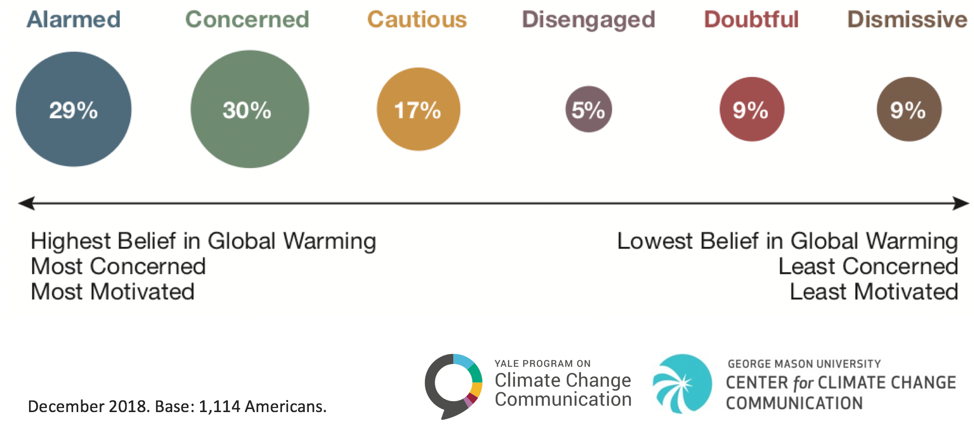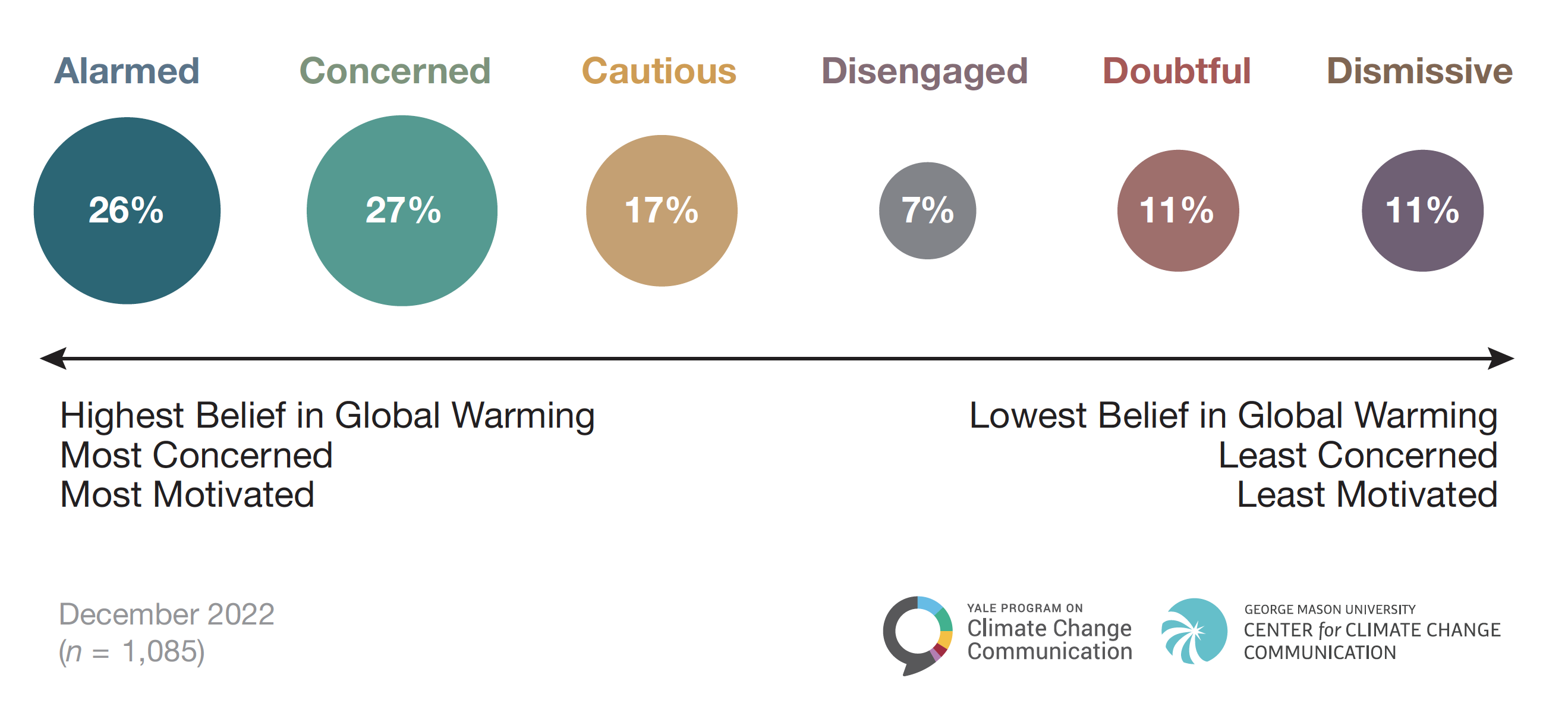One decade later you can see opinions shifting toward concern and alarm:

Credit: Yale Program on Climate Change Communication. December 2018
And here is December of 2022, which interestingly (and alarmingly) shows that opinion shifted just a bit to the right despite record-breaking heat waves, wildfires, and other signs of climate change:

There are three images that show the proportion of the U.S. adult population hold specific attitudes towards climate change. The attitudes are, from the highest belief in global warming/most concerned/most motivated to lowest belief in global warming/least concerned/least motivated are alarmed, concerned, cautions, disengaged, doubtful, dismissive. The following table shows the data of each category from 2009, 2018, and 2022.
| Attitude | 2009 | 2018 | 2022 |
|---|---|---|---|
| Alarmed | 18 | 29 | 26 |
| Concerned | 33 | 30 | 27 |
| Cautious | 19 | 17 | 17 |
| Disengaged | 12 | 5 | 11 |
| Doubtful | 11 | 9 | 11 |
| Dismissive | 7 | 9 | 11 |
But what does this shift mean for meaningful and effective action to address climate change? We can see that the Alarmed group (which, if you remember, are the folks that unequivocally believe climate change is happening, that humans are the cause of it, and that it's already affecting people in the US) saw the most marked change - jumping from 18% of survey respondents to 29% in 2019 and 26% in 2022. The 3% and 6% decrease in Concerned individuals is likely at least partially explained by moving from Concerned to Alarmed. And while these numbers are encouraging from the perspective of engaging in meaningful policy measures to address climate change, there's also something going on at the other end of this spectrum. The percentage of Dismissive has gone up by 2% then 2% again. Are we simply becoming more polarized in our views? Take a look at the Disengaged group and remember that they were identified as the group most likely to change their opinion on the topic. They've gone from 12% to just 5% over one decade, then up to 7%. It appears that the American people are becoming more solidified in their stance on climate change. It will be interesting to follow these trends as climate policies change from administration to administration, and as weather patterns continue to get weird and "natural" disasters continue to occur.
